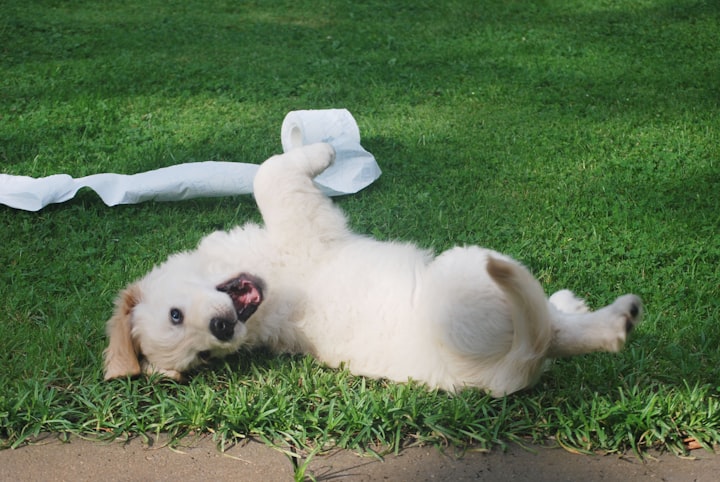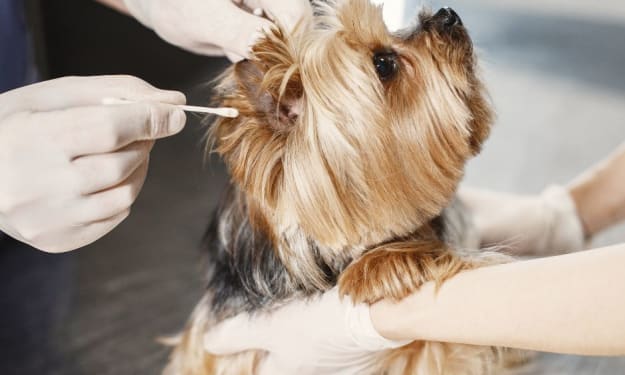
Puppy training is essential for your puppy’s physical and mental health and the relationship between you and your puppy. It helps prevent behavioral issues, and aggression problems, and ensures safety for both your puppy and those around them. Puppy training is an ongoing process that requires patience, consistency, and positive reinforcement techniques. With proper training, your puppy can grow into a well-behaved and happy adult dog that can bring joy and companionship to your life for years to come. In this essay, we will discuss some of the most effective advanced training techniques for puppies.
1. Target Training: Target training is a technique that involves teaching your puppy to touch a specific object with its nose or paw. This can be a useful skill for various situations, such as guiding your dog to a specific spot or helping them overcome the fear of certain objects. To train your puppy to target, start by holding a small object such as a stick or a target stick, and present it to your puppy. When they touch the object with their nose or paw, immediately reward them with a treat or verbal praise. Repeat this several times until your puppy starts to associate the object with the reward, and then gradually increase the distance between your puppy and the object. Once your puppy has mastered touching the object, you can start introducing different objects to the target and gradually increase the level of difficulty.
2. Clicker Training: Clicker training is a popular positive reinforcement training technique that involves using a clicker to signal to your dog that they have performed a desired behavior. To start clicker training, first, teach your puppy that the clicker sound means a reward is coming. Start by clicking the clicker and immediately give your puppy a treat. Repeat this several times until your puppy starts to associate the clicker sound with the reward. Next, choose a behavior that you want your puppy to perform, such as sitting or lying down, and wait for them to perform the behavior. The moment they do, click the clicker and reward them with a treat. Repeat this process several times until your puppy starts to associate the behavior with the clicker sound and the reward. Clicker training can be used to teach a wide range of behaviors and tricks, from simple commands like sit and stay to more complex tricks like roll over and play dead.
3. Agility Training: Agility training involves teaching your puppy to navigate through an obstacle course that includes jumps, tunnels, and other obstacles. This type of training not only improves your puppy’s physical fitness but also enhances their coordination, problem-solving, and decision-making skills. To get started with agility training, set up a basic obstacle course in your backyard or a local park using items like cones, jumps, and tunnels. Encourage your puppy to navigate through the course by using verbal cues and treats as rewards. Once your puppy has mastered the basic course, you can gradually increase the level of difficulty by adding more obstacles or by increasing the height of the jumps.
4. Scent Training: Scent training is a fun and challenging way to engage your puppy’s natural hunting instincts while also improving their problem-solving and memory skills. This type of training involves teaching your puppy to identify and locate specific scents, such as a particular food or a toy. To start scent training, choose a scent that your puppy is already familiar with, such as their favorite toy or treat. Hold the scent in front of your puppy’s nose and let them sniff it for a few seconds. Then, hide the scent in a nearby location and encourage your puppy to find it using verbal cues and treats as rewards. Repeat this process several times until your puppy starts to associate the scent with the reward and is able to locate it quickly and accurately.
5. Heel Training: Heel training is a technique that involves teaching your puppy
to walk calmly and obediently by your side on a leash without pulling or wandering. This is a crucial skill for puppies to learn, especially when you’re out for walks or in public places. To start heel training, attach a leash to your puppy’s collar and hold it in your left hand, with your puppy on your left side. Use a treat to lure your puppy into position, with their shoulder aligned with your knee, and give them the command “heel.” As you walk, keep the leash short and give gentle tugs to correct any pulling or wandering. Reward your puppy with treats and praise for walking calmly by your side. Gradually increase the distance and duration of the walk as your puppy becomes more comfortable with the command.
6. Free Shaping: Free shaping is a technique that involves allowing your puppy to use their own creativity and problem-solving skills to come up with a desired behavior or trick. This type of training is especially effective for building confidence and encouraging independence in puppies. To start free shaping, choose a behavior or trick that you want your puppy to perform, such as rolling over or jumping through a hoop. Then, simply wait for your puppy to offer any behaviors or movements that are related to the desired behavior. Reward any behavior that is even remotely related to the desired behavior, and gradually shape the behavior by rewarding closer approximations until your puppy performs the desired behavior.
Advanced training techniques can provide puppies with a range of benefits, from improving their physical fitness and coordination to enhancing their problem-solving, decision-making, and memory skills. These techniques can also help to build confidence and independence in puppies, which can lead to a happier and more well-behaved adult dog. By incorporating advanced training techniques into your puppy’s training routine, you can help them reach their full potential and develop into well-rounded, obedient, and sociable companions.






Comments
There are no comments for this story
Be the first to respond and start the conversation.